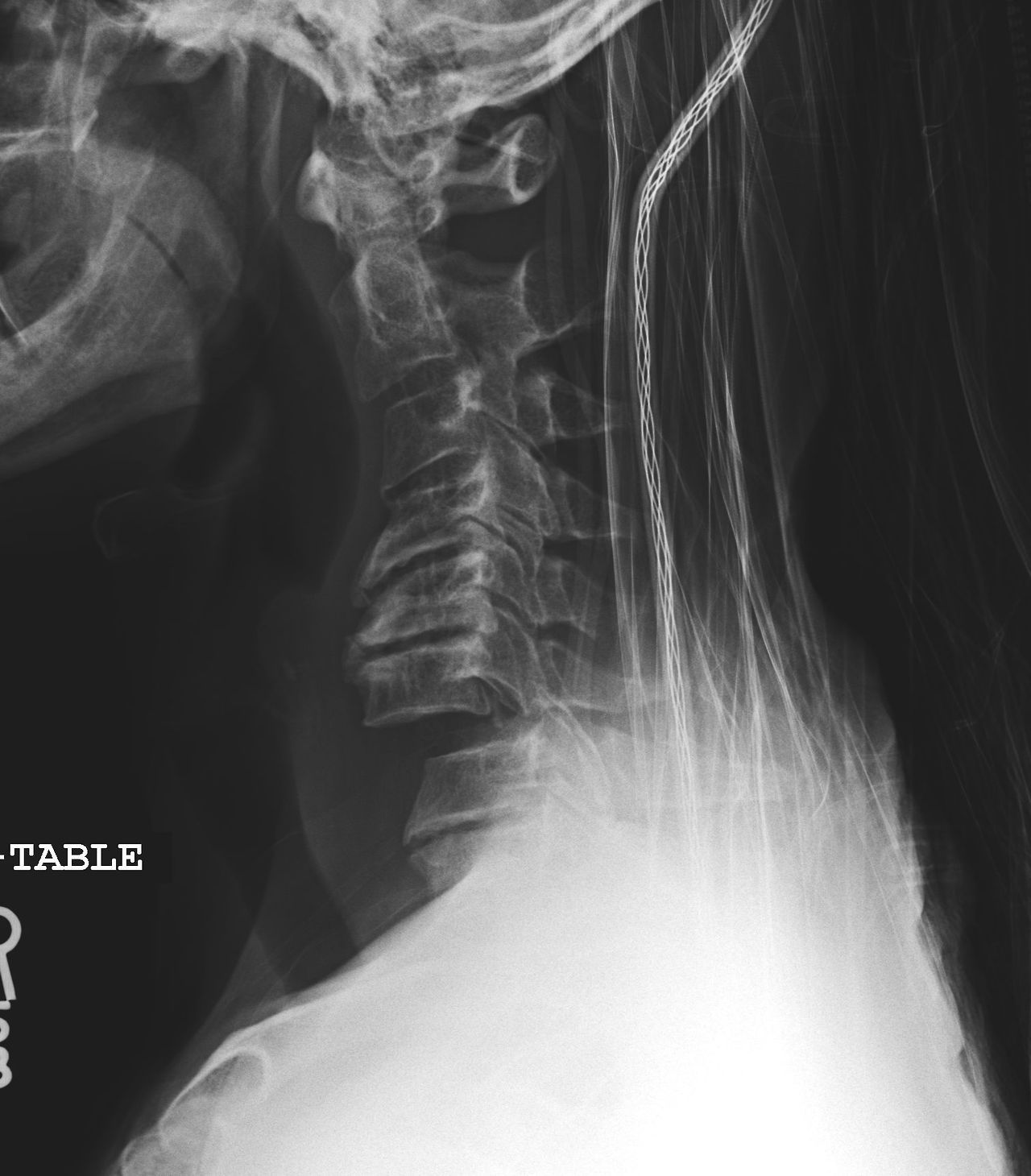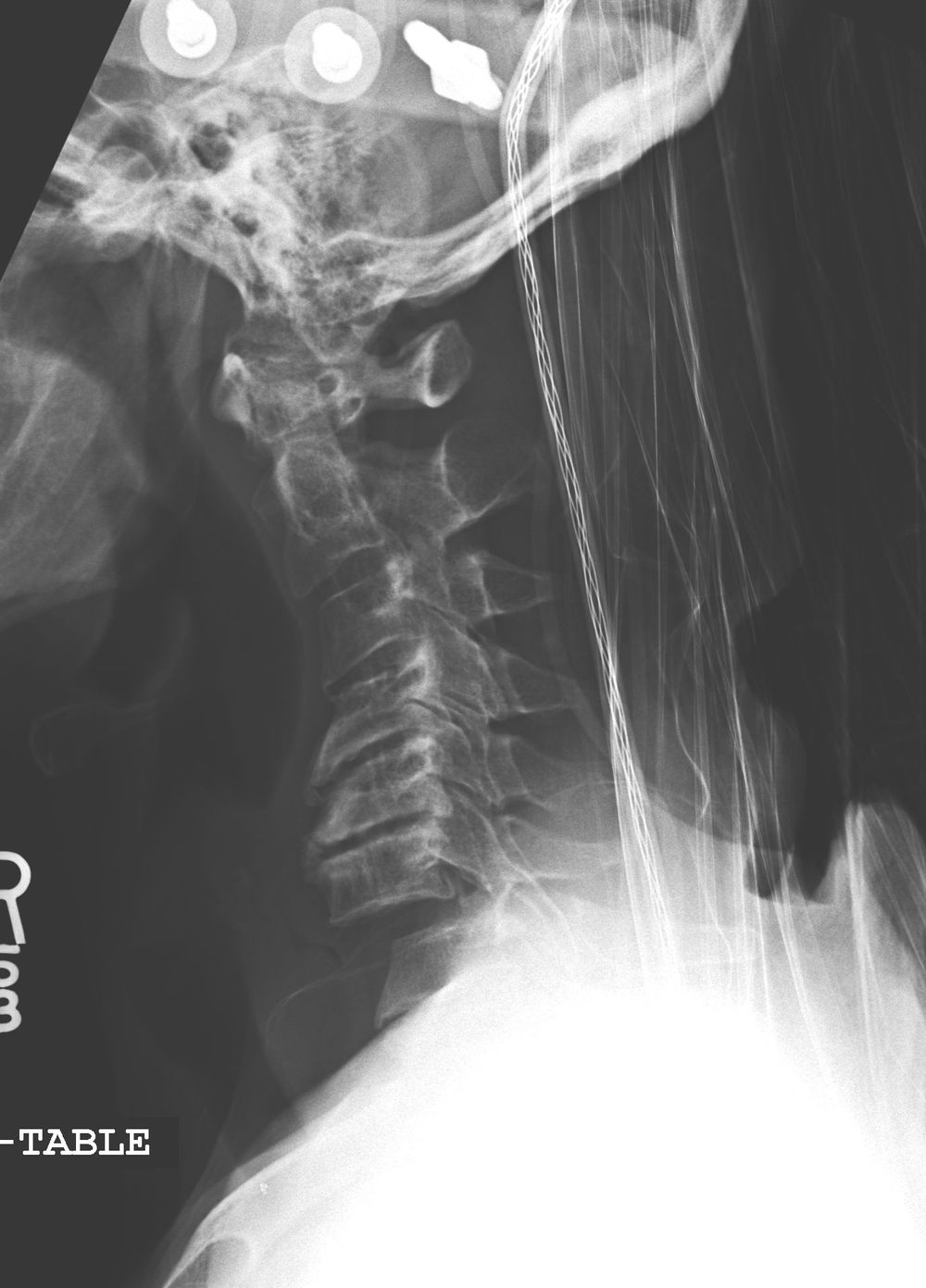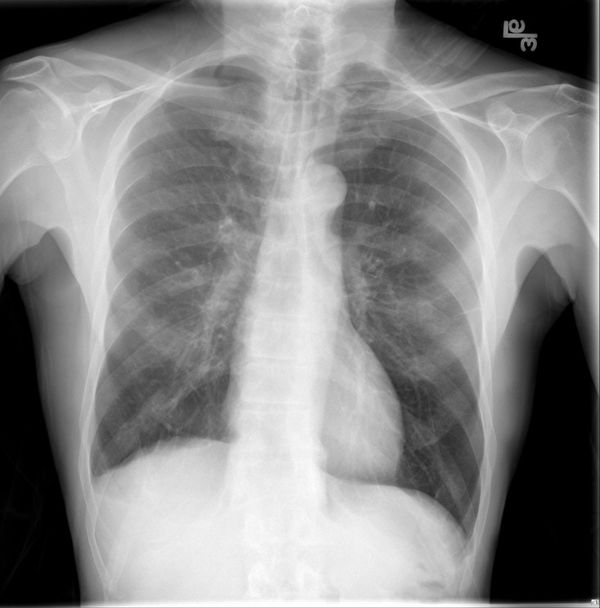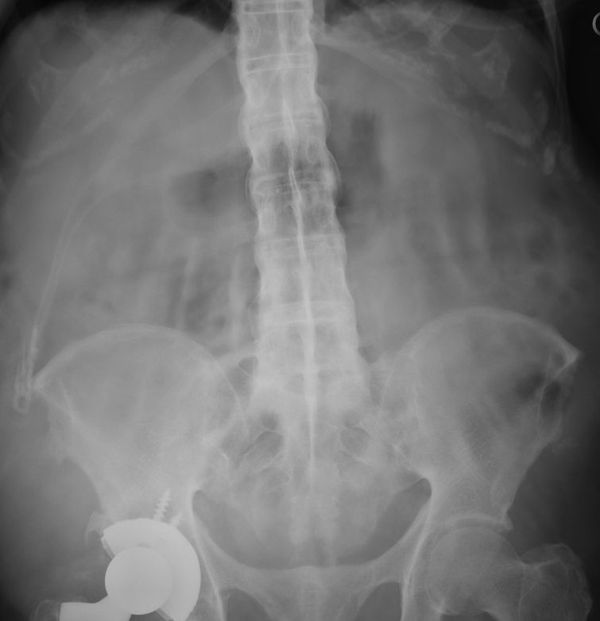Season 6 Case 3
Case 3
History: MVA

Answer:
CLICK HERE FOR ANSWER
Case 3 Answer
Answer: bilateral jumped facets (C6 on C7)

I drew in some lines to show where the inferior and superior facets were for the lower cervical levels.They should be like shingles on a roof. Superior and inferior facets should be parallel and should all line up. Here you can clearly see the inferior C6 facet has moved very far forward and dislocated anterior to the superior C7 facet. Once it drops (as is here) it can’t move back to it’s normal position (thus the term “locked” is often used). From my experience, the next 6-10 plains you will then see are increasing amounts of traction to try and distract the vertebrae (and facets) to allow them to slide back into normal position.
“Perched” facets is a specific variant of this where the lower tip of the superior facet is sitting right on the apex of the inferior facet.So it’s frankly dislocated, but likely needs some help to get back into normal position.
Generally bilateral facet dislocations these are fairly obvious because you get a significant anterolithesis of the vertebral bodies at that level. Unilateral can be much more difficult. They don’t have to be anterolithesed and you really need to look at the pairing of the facets at each level to look for one displaced forward compared to the contralateral one. The “bow-tie” sign is the classically described appearance.
Axially these can also be easy to overlook. They call it the “inverse hamburger sign” so don’t just look there there is a facet joint, make sure the appropriate cortices are articulating (see the reference below)
reference: http://www.radiologyassistant.nl/en/p49021535146c5/spine-cervical-injury.html#i490575d23649d
“bow-tie” sign: http://www.orthopaedicsone.com/display/Images/Findings+429




